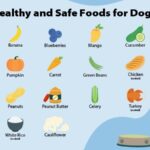Food poisoning is an unpleasant experience caused by consuming contaminated food or beverages. Understanding the timeline between eating contaminated food and the onset of symptoms is crucial for identifying the cause and seeking appropriate care. This article will explore the typical timeframes, common causes, and preventive measures related to food poisoning.
Understanding the Food Poisoning Timeline
The incubation period, or the time between consuming contaminated food and experiencing symptoms, can vary significantly. It depends on the type of bacteria, virus, or toxin involved. Some infections can cause symptoms within hours, while others may take days or even weeks to manifest.
Generally, symptoms of food poisoning appear within:
- A few hours to a few days: This is the most common timeframe for many bacterial and viral infections.
Common Symptoms of Food Poisoning
The symptoms of food poisoning can vary depending on the contaminant. However, some of the most common symptoms include:
- Upset stomach: A general feeling of nausea or discomfort in the stomach.
- Vomiting: Expelling the contents of the stomach.
- Diarrhea: Frequent, loose, and watery stools.
- Stomach pain and cramps: Sharp or dull pain in the abdominal area.
- Fever: An elevated body temperature.
- Headache: Pain or pressure in the head.
- Bloody stools: Diarrhea with the presence of blood, indicating a more serious infection.
In rare cases, food poisoning can affect the nervous system, leading to more severe symptoms such as:
- Blurred or double vision
- Muscle weakness
- Tingling or numbness
- Difficulty swallowing
When to Seek Medical Attention
While most cases of food poisoning resolve on their own, it’s important to know when to seek medical help. For infants and children, dehydration can be a serious concern. Consult a healthcare provider if a child experiences:
- Unusual changes in behavior
- Excessive thirst
- Little or no urination
- Weakness or dizziness
- Diarrhea lasting more than a day
- Frequent vomiting
- Bloody or black stools
- Severe abdominal pain
- Fever, especially in children under 2 years old
Adults should seek medical attention if they experience:
- Nervous system symptoms (blurred vision, muscle weakness, tingling)
- Changes in mental state
- High fever (103°F or higher)
- Frequent vomiting
- Diarrhea lasting more than three days
- Signs of dehydration (extreme thirst, dry mouth, reduced urination)
Common Causes of Food Poisoning and Their Onset Times
Different pathogens have different incubation periods. Here’s a breakdown of common culprits:
| Disease cause | Timing of symptoms | Common sources |
|---|---|---|
| Bacillus cereus (bacterium) | 30 minutes to 15 hours. | Foods such as rice, leftovers, sauces, soups, meats that have been left at room temperature too long. |
| Campylobacter (bacterium) | 2 to 5 days. | Raw or undercooked poultry, shellfish, unpasteurized milk, and contaminated water. |
| Clostridium botulinum (bacterium) | 18 to 36 hours. | Home-canned foods, honey (for infants), fermented foods, and oils infused with herbs. Improperly processed canned goods can also be a source. |
| E. coli (bacterium) | Usually, 3 to 4 days. | Raw or undercooked meat, unpasteurized milk or juice, soft cheeses from unpasteurized milk, fresh fruits and vegetables, and contaminated water. |
| Salmonella (bacterium) | 6 hours to 6 days. | Most often poultry, eggs, and dairy products. Other foods such as fresh fruits and vegetables, meat, poultry, nuts, nut products, and spices. |
| Norovirus (virus) | 12 to 48 hours. | Shellfish and fresh fruits and vegetables. Ready-to-eat foods, such as salads and sandwiches, touched by food handlers with the virus. Food or water contaminated with vomit or feces of a person with the virus. |
| Staphylococcus aureus (bacterium) | 30 minutes to 8 hours. | Meat, egg salad, potato salad, or cream-filled pastries that have been left out too long or not refrigerated. Foods handled by a person with the bacteria, which is often found on skin. |
How Food Becomes Contaminated
Food can become contaminated at any stage of the process, from farm to table. This can occur due to:
- Poor handwashing: Inadequate hand hygiene allows germs to transfer from hands to food.
- Cross-contamination: Using the same cutting boards and utensils for raw and cooked foods without proper cleaning can spread bacteria.
- Improper storage: Leaving food at room temperature for extended periods allows bacteria to multiply rapidly.
- Inadequate cooking: Undercooking meat, poultry, and seafood can leave harmful bacteria alive.
- Contaminated water: Using contaminated water to wash produce or prepare food can introduce pathogens.
Prevention Strategies
Preventing food poisoning involves following safe food handling practices:
- Wash hands frequently: Wash your hands thoroughly with soap and water for at least 20 seconds before and after handling food.
- Cook food thoroughly: Use a food thermometer to ensure meat, poultry, and seafood reach safe internal temperatures.
- Store food properly: Refrigerate perishable foods promptly and keep hot foods hot.
- Avoid cross-contamination: Use separate cutting boards and utensils for raw and cooked foods.
- Wash produce thoroughly: Rinse fruits and vegetables under running water before eating or preparing.
Special Considerations for At-Risk Groups
Certain populations are more vulnerable to severe food poisoning:
- Infants and young children: Their immune systems are not fully developed.
- Pregnant women: Food poisoning can lead to complications for both the mother and the baby.
- Older adults: Their immune systems may be weakened.
- People with weakened immune systems: Conditions like HIV/AIDS or treatments like chemotherapy can compromise the immune system.
These individuals should avoid high-risk foods like raw or undercooked meats, unpasteurized dairy products, and raw sprouts.
Conclusion
Knowing How Long After Eating For Food Poisoning symptoms can start helps you understand the potential source of your illness. While most cases are mild and resolve on their own, it’s important to be aware of the symptoms that warrant medical attention. By practicing proper food safety measures, you can significantly reduce your risk of food poisoning and protect your health.

